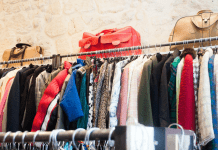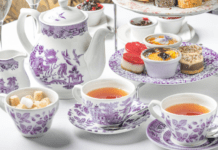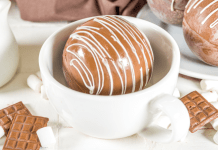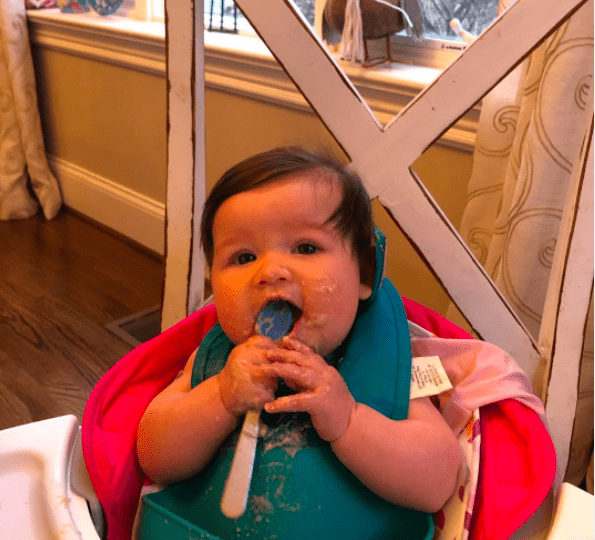
After three babies, I still have a lot to learn about parenting. But one thing that I have felt confident in is starting solids from an early age and raising my kids to be open minded about a variety of foods.
While most moms dread the four month mark because it seems stressful, I get excited about it! Here’s why:
- It is a milestone in development that reminds me that their personalities and gross motor skills are starting to blossom. It is so fun to watch babies grow!
- I love watching their faces as they try new foods.
- I can give baby food to keep her entertained if I’m tending to other kids or cooking. It’s a nice break from just giving her milk.
- I love to cook and it’s rewarding to prepare nourishing food for them.
Yes, it is messy and time consuming, and some days I just want someone else to feed the baby, but the payoff of feeding them healthy foods right from the start is huge! (Keep in mind you should always talk to your pediatrician before starting especially if there is a history of food allergies. And also, please note that this is not a comprehensive resource for feeding your baby. There are many excellent websites and books that go into more detail like Moms on Call, and DrGreene.com. These are just some quick tips that I have followed with all three of my girls.
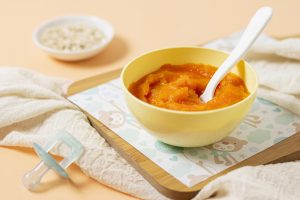
Here is a basic rundown of how I’ve started solids with each of my girls:
- Start right at four months with pureès, either homemade or store bought. I recommend using fresh, organic ingredients or frozen if making them yourself. Some good first foods include mashed banana, oatmeal cereal (mix with formula or breast milk to a yogurt consistency), or mashed sweet potato. You can just start with one feeding per day, typically an hour after a feeding. It doesn’t have to be the same time every day and if you miss a day, don’t stress! The first month is mostly experimental. If baby spits out the food or makes a funny face, don’t assume they don’t like it. Dr Green says it can take up to seventeen attempts before baby decides if she likes it or not! I use this trick with my older kids too. Some days they love broccoli and the next day they hate it. I make them try everything on their plate, every time. They normally come back around to that particular food.
- If you choose to make your own baby food, buy a little extra of whichever vegetables and fruits you’re making for your family that week. You can steam them in a steam basket while you’re preparing dinner and set them aside to blend up or cut into finger foods (for older babies). I bought this masher bowl because it’s super easy to use, clean and travel with! A blender or food processor works well too. You can store the pureès in freezer safe silicone trays, then pull a few out for the fridge each night for the next day. Here are my favorite bibs, travel friendly spoons, and reusable pouches. Quick Tip: when you are eating out, you can ask for a side sweet potato or avocado as baby’s meal! Even if it’s not on the menu, most restaurants have one of these two items.
- As baby gets close to seven months, they can typically start to bring food to their mouth. It is messy and most of it will end up on the bib, but they will enjoy practicing their pincer grasp and hand-eye coordination. This is usually when I gradually shift towards baby led weaning (BLW) feedings. Instead of making pureès you can cut the soft foods into finger sized portions for them to feed themselves. Make sure to always supervise them! They may gag or act like they are choking but they are practicing using their gums to chew and work the food towards the back of their mouth.
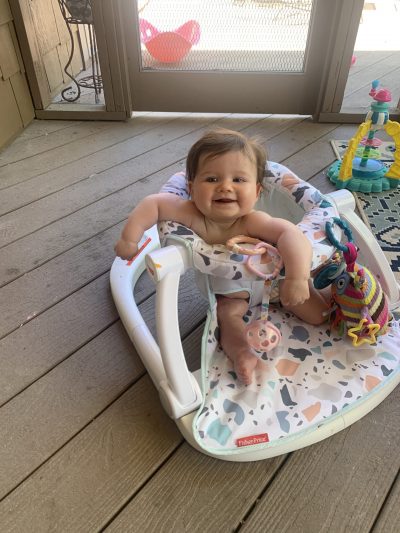
If you’re looking for some recipe inspiration or guidance with food choices check out this book called Little Foodie. There are lots of recipes for not only babies but toddlers and the whole family! I love to prepare muffins that are both safe for baby and my older girls’ lunch boxes. I’m all about saving time and money.


